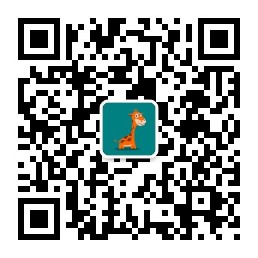第936期:思想界的世纪难题”the Trolley Problem”,你会怎么做?
哈佛大学有一门著名的免费公开课:Justice(正义课),授课老师是美国当代哲学家Prof. Michael Sandel.
这门课我认真地连看了两遍,按照教授的要求读了不下五十本哲学书,是截至目前我收获最大的一门网课。
*网课地址 – Harvard University’s Justice, with Michael Sandel – Lecture 1: The moral side of murder
Sandel教授在第一课上总是以一个假设的思想难题开头:
There is a runaway trolley barreling down the railway tracks.
Ahead, on the tracks, there are five people tied up and unable to move.
The trolley is headed straight for them. You are standing some distance
off in the train yard, next to a lever. If you pull this lever, the
trolley will switch to a different set of tracks. However, you notice
that there is one person on the side track. You have two options:
(1) Do nothing and allow the trolley to kill the five people on the main track.
(2) Pull the lever, diverting the trolley onto the side track where it will kill one person.
Which is the more ethical option? Or, more simply: What is the right thing to do?
这个假设场景的大意是:
一辆有轨电车正向你飞快地驶来,前方是一个轨道分岔口。
分岔口的一方轨道上有五个人,被绑在地上没法活动。
分岔口的另一方轨道上有一个人。
你恰好站在轨道分道扳手旁边,你可以立即用扳手使这辆电车改道撞向一个人,你也可以什么都不做,看电车把那五个人轧死。
你会怎么做?
这个假设的场景是一个著名的西方思想界的难题——the Trolley Problem.
大多数人的第一反应都是改变电车行进方向,救下那五个人。
但是,那五个人是获救了,但是那个被撞死的人就该死吗?
按照功利主义(utilitarianism)的理念,你这个选择是正确的,不仅正确,而且正当——right and moral.
*功利主义(utilitarianism)哲学代表人物是英国哲学家 Jeremy Bentham(边沁) and John Stuart Mill(约翰·斯图亚特·密尔,也有译为“穆勒”的)。
什么是功利主义?
Utilitarianism is an ethical theory that determines right from wrong by focusing on outcomes. It is a form of consequentialism.
简单说就是判断一件事对或错只看结果和效果。在上面那个场景中,杀死一个人和杀死五个人的结果一权衡,牺牲一个人拯救了五个人的效用和结果是好的,所以就是对的。
这是边沁功利主义思想的内核。
注:
Bentham’s Principle of Utility:
(1) Recognizes the fundamental role of pain and pleasure in human life,
(2) approves or disapproves of an action on the basis of the amount of
pain or pleasure brought about i.e, consequences,
(3) equates good with
pleasure and evil with pain,
(4) asserts that pleasure and pain are
capable of quantification (and hence ‘measure’).
哈佛课堂上绝大多数学生都做了同样的选择。
Sandel教授进一步启发大家,又提出了一个假设的场景:
As before, a trolley is hurtling down a track towards five people. You
are on a bridge under which it will pass, and you can stop it by putting
something very heavy in front of it. As it happens, there is a very fat
man next to you – your only way to stop the trolley is to push him over
the bridge and onto the track, killing him to save five. Should you
proceed?
场景大意:
一辆电车正飞速冲向五个人。此时你正好站在轨道上方的桥上。现在唯一能使电车停下来的办法是用一个重物放在电车前面阻挡它前进。你的身边是一个胖子,他跟你同时站在桥上。你唯一能救那五个人的办法是把这个胖子推下桥去挡住电车。
你会这样做吗?
绝大多数学生都选择了——不会。
Sandel教授问为什么?
学生们说因为推他下去是murder.
其实,这不是问题的关键。
如果把胖子推下去,救了五个人是谋杀;那么在第一个场景中使用轨道分道器使电车改道轧死那一个人以拯救五个人是不是谋杀呢?
在第一个场景中,假如那一个无辜的人是你的熟人,你的亲属,你还会那样选择吗?(当然某些想杀妻杀夫的人除外)
这个哲学假设场景在思想界、哲学界、心理学界、伦理学界争论了几十年,至今也没有一个完全的解决方案和完美的答案。
2015年,英国电影”Eye in the Sky”中也出现了一幕类似的场景:
英军得到情报显示有恐怖分子马上要对人群进行一次袭击,特种部队迅速锁定了恐怖分子的位置,准备用无人机把他们摧毁。这时候,望远镜中突然出现了一个卖面包的小女孩,就在恐怖分子的藏身地点旁边。
这时候,还应该继续使用无人机进行攻击吗?牺牲小女孩一条生命换取数百人的生命值得吗?
这个问题无解,这就是the Trolley Problem.
也许你觉得这种假设场景毫无意义,因为太极端,在生活中并不常见。很多哲学家其实也这样反驳。
但哲学一直在探讨,一直想要解决的不就是各种人类的困境和难题吗?
亲爱的读者,你会怎么做呢?
怎样做才是道德的?道德的是否就是对的?对的是否就是道德的?
参考阅读
-
The Atlantic – Would You Pull the Trolley Switch? Does it Matter?
- The Guardian – The trolley problem: would you kill one person to save many others?
- Philosophy Now – Could there be a solution to the trolley problem?
-
Joshua D. Greene – Solving the Trolley Problem (pdf)



